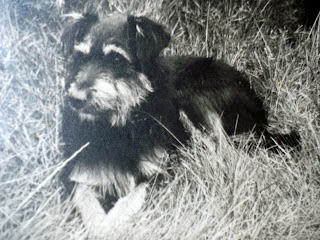I'm not sure if you can see from my photo, but this antique wooden carved candlestick had originally been painted in a strange dun coloured, greyish-brown colour, that has now mostly disappeared.
When I was at college most of our painting from life, or still-life, was done either standing at an easel, or sitting on what I think were called 'Donkeys'.
'Donkeys' were a type of long stool or bench that you straddled, and propped your pad or canvas at the far end.
Traditionally at the end of the day, you scraped your palette clean, and deposited the multi-coloured scrapings underneath the far end of the Donkey. After a build-up of paint, it could be scraped off and used as background colour, to take away any vestige of white on your canvas.
The colour when mixed homogenously was amusingly known as 'Bench-end'.
I was handling the candle stick recently, and came to the conclusion that its original colour was indeed 'Bench-end'. Whether or not this came from an end of day build-up of unwanted colours is not known.
.jpg)









If I look at that candlestick long enough I can see a little seated figure at the base supporting the stick on his head.
ReplyDeleteI can see what you mean, I shall now be seeing for ever after!
DeleteI like the candlestick. It must have a long history. Where did you ever find it?
ReplyDeleteAt a local antique market, but it wasn't cheap.
DeleteI love this! Colonial Sydney had much of the timber-work on public buildings and other nondescript architecture painted in "drab", which was the mish-mash of leftover expensive and custom-made paint, always resulting in a dreary brownish colour. Bench-end is a much better name.
ReplyDeleteThis comment has been removed by a blog administrator.
ReplyDeleteThis comment has been removed by a blog administrator.
ReplyDeleteI like the candlestick, but I would have to clean it up and repaint it.
ReplyDelete